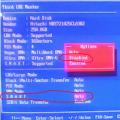Date: 08/26/2013, 15:03
We invite you to consider several options on how you can easily configure the amplifier, depending on its purpose at one time or another. Let's do this using the four-channel amplifier Blaupunkt GTA-475 series as an example. Do not forget that no matter what methods of adjusting such amplifiers you use, their meaning is still the same. For example, instead of smoothly adjusting the cut using the so-called “twist”, you can use a fixed switch.
The front control panel of the amplifier has a line piercing the upper controls, on which you can see the inscription FRONT. This means that these adjustments are used to adjust the front (front) channels, adjust the REAL, and also adjust the channels to which the subwoofer or rear speakers are connected (rear).
Now is the time to learn how to set up an amplifier in a four-speaker system without including a subwoofer. It is easiest to configure this system, since the amplifier filter is already turned off, and the speakers reproduce absolutely the entire possible frequency range. Set the switches to the appropriate positions:
Set the LEVEL switch to position 8V (front and rear);
- set CROSSOVER SELEKTOR to the FLAT position (front and rear);
- set the BASS BOOST switch to 0dB (front and rear).
After the work has been done, set the volume on the radio to about 80-90%. Why not 100%? Yes, because we need a power reserve, due to the fact that some compositions are played very loudly, others normally, and others very quietly. The task would be simplified if the equalizer of the radio was already configured. If not, then set all the sliders to zero. You can also select from the list of proposed settings one of the options that suits you best (POP, DANCE, CLASSIC, ROCK, etc.). Then, turning on the music, slowly turn the LEVEL control to the right to the maximum value. At the same time, we make sure that the sound is as clear as possible and loud enough. If there is not enough power, then you can add more BASS BOOST.
The following instructions are for setting up an amplifier for speakers and a subwoofer. Let's assume we are dealing with regular speakers that are connected to the front channels. There is no rear subwoofer here. Let's get started. We set the switches one by one to the appropriate positions:
We set the FRONT switch to the HP position, while the FI PASS regulator should be in the range of 70 - 90Hz;
- set the REAL switch to the LP position, while the LOW PASS type regulator should be in the range of 60 - 80Hz;
- set the LEVEL switch to 0 (8V to the front and rear);
- set the BASS BOOST switch to 0dB (front and rear).
We adjust the sensitivity of LEVEL and BASS BOOST, as in the above example, but to our own taste.
And finally, let's start setting up the amplifier with channel amplification. Typically, such amplification is applied only to the front speakers. Then the tweeters and speakers (midbass) are amplified separately. Subtleties of this type of setting:
Set the CROSSOVER SELEKTOR switch to the FLAT position;
- turn on HP, and set the HI PASS control to the 250Hz position.
Using advanced head units (radio tape recorders), the above mentioned methods for adjusting amplifiers may not be applicable. The thing is that the radio itself is already capable of filtering all frequencies, and adjusting BASS BOOST is not difficult. All that remains is to set the LEVEL on the amplifier to a position suitable for each.
How to connect a subwoofer to a 4 channel amplifier
How to connect a subwoofer to a 4-channel amplifier without losing power? What needs to be done so that the connection diagram of a subwoofer to a 4-channel amplifier is fully and correctly implemented?
All these questions require answers, which we will try to provide in the article.
What is an amplifier for?
The audio system, as you know, has long been of interest to the driver. If earlier more attention was paid to the chassis or technical serviceability of the vehicle, today, on the contrary, it is to comfort.
And car audio occupies one of the leading positions in this regard. In order for the audio system to play at full power, recently they have introduced a separate speaker that reproduces low frequencies.
It is connected through an amplifier. Today there are three types of amplifiers installed in a car.
Note. The amplifier is installed in the car so that the driver and his passengers can fully enjoy the sound of music or watching a movie or video. For this reason, a properly selected and installed amplifier is of great benefit.
Of the above types of amplifier, 4-channel is considered the most popular, because it can be used for both 4 and 2 speakers, as well as a subwoofer.
In addition, the 4-channel amplifier can be used to connect 2 subwoofers.
Note. The best and most widespread manufacturers of high-quality 4-channel amplifiers are considered to be models from the brands Alpin, Blaupunkt, Magnat, etc.
- A 4-channel amplifier can be of two more classes:
- AV amplifier (see), that is, analog, with high amplification quality, but low efficiency and low power;
D is a digital amplifier, already with high efficiency and high power, but low quality.
Connector groups
A 4-channel amplifier has not one, but several groups of outputs.
- Let's look at them in more detail:
- Power connectors or outputs for power supplies.
- 12 V outputs, which are powered by the battery. When connecting wires to these contacts, it is recommended to also install a fuse at a remote distance from the battery.
- REM output, where the control cable from the head unit is connected.
- Output 1.3 GND or simply grounding. Designed to be connected to the machine ground.
- Inputs for speakers and subwoofers, with plus/minus contacts.
The lineinput and output outputs are linear for RCA or simply tulip wires.
Instructions for setting up a 4-channel amplifier
Generally, there are three types of amplifier settings you need to know. All of them are given below.
Amplifier setup for four speakers but no subwoofer
- So:
- The amplifier's filter/crossover is turned off, and only the speakers reproduce the entire frequency range.
- Level is set to position 8V.
- Bass Boost is set to 0dB.
- Now you will need to increase the volume on the car radio, but not more than 90%.
- The equalizer, if it is not configured, is set to position 0 according to music styles.
- Connect the amplifier and slowly turn the Level clockwise until the end.
Setting up an amplifier for a subwoofer and speakers
Amplifier setup for four speakers but no subwoofer
- Crossover Selector Front on the amplifier is set to the HP position.
- Phi Pass is set to 60Hz-80Hz.
- Crossover Selector Rear is installed on LP.
- Love Pass is adjustable in the frequency range 65Hz-85Hz.
- Level is set to 0.
- Bass Boost is also at 0dB.
- As with the above-described Level setting, rotate it all the way, but adjust the sensitivity.
Tuning for local gain
Amplifier setup for four speakers but no subwoofer
- Crossover The selector is set to Flat.
- Turn on HP for tweeters.
- Turn the Hi PASS control to the 250Hz position.
- We adjust the amplifier using the Level rotator.
Note. If the car radio in the car is a new version, adjusting the amplifier may not be necessary. These radios already have automatic Bass Boost settings. If this is the case, then you will just need to adjust the Level rotator.
Connection diagram for a passive subwoofer to a 4-channel amplifier
To connect this type of speaker to a 4-channel amplifier, you will have to use a standard circuit.
Amplifier setup for four speakers but no subwoofer
- First, the subwoofer and other speakers are connected to the amplifier.
- Then the amplifier is connected to the car radio.
- Having received the signal directly from the car radio, the amplifier distributes it. Part of the signal is sent to the sub, and part to the tweeters.
Note. Often the subwoofer is placed in the trunk of a car. In view of this, it is necessary to stretch cables there through the entire cabin. In this case, the path from the battery to the trunk is implied, and so much cable needs to be calculated.
- When wiring cables, you need to make sure that the positive wire is protected with something, for example, corrugation. Basically, this means protecting the part that is located in the engine compartment, as close as possible to the battery.
Features of connecting a subwoofer to an amplifier
Amplifier setup for four speakers but no subwoofer
- The power cable must be connected to the amplifier, first preparing the technological hole. Often this same hole already exists in cars. It is either closed with a rubber plug, or, as in domestic cars, remains open.
If you couldn’t find a hole, you can make it yourself using the necessary drill bit and drill. It is recommended to insert a rubber bushing into the hole so that the wire does not fray in this place.
- The wiring must be routed in the engine compartment, finding the standard wiring harness. The necessary wire should be brought into the interior.
- The amplifier will be located in the trunk of the car.
- Two wires must be connected to the amplifier: plus and minus.
- After this, as soon as the amplifier receives power from the battery, we run the cable to the head unit (car radio). Standard tulips and a special wire are used as a cable - thin and single-core, responsible for controlling the power supply of the amplifier (in many cases the blue wire).
- We connect the tulips and the wire to the back of the car radio, which must be removed in advance.
- We stretch the cable through the interior and connect the RCA connectors to the amplifier.
- Now all that remains is to connect the subwoofer. The amplifier is 4-channel and therefore you can connect a subwoofer depending on which one is used.
The instructions given above will help many times more if, in addition, you watch the video review and photo materials. If you do this whole operation yourself, you will be able to save a lot on costs, because the price of such a service at a service station is very high.
Before you begin adjusting all the amplifier settings, you must make sure to coordinate between the amplifier level and the signal level of the radio. Get behind the wheel, return to zero (level), make sure that the amplifier Level (power level) is in the minimum sensitivity position. Now increase the volume of the radio until distortion appears. When it starts to choke, lower the volume a little. Now you have to warm up and climb into the trunk (the amplifiers are usually located there). You can tune the amplifier by increasing its power level until distortion appears again. Once the speakers are at full power, lower the amplifier level. We get consistent levels of the amplifier and radio.
Any amplifier is equipped with low and high pass filters (low pass and high pass). The high pass filter is used to limit low frequencies from reaching the speakers. The high frequency adjustment scale is adjustable within the range of 40-160 Hz. Depending on the speaker system, the filter is set to 80-100 hertz. In systems with a subwoofer, a low pass filter is used. The principle of operation of this filter is similar to the previous one, the only difference is that low pass does not allow the subwoofer to reproduce frequencies above the set adjustment. Most often the filter is set at 70-90 Hz. There is also an option to turn off all filters, but then the depth and volume of the sound will be lost.
After you have managed to configure the amplifier, it is worth returning to adjusting the sound regarding the direction and focus of the overall sound scene.
Don't forget that a new speaker system takes time to develop. As a rule, this takes 1-1.5 months. At this time, turning on the sound at full volume is highly undesirable. After this period, the speaker will “walk” easier, and the rubber suspension will become softer. Now you can start adjusting the power amplifier. Subwoofers can “sing” from 2 months to six months.
Video on the topic
The installed and connected speaker system must be configured correctly. The essence of the setup is to set the cutoff frequencies for acoustics and subwoofer on the amplifier, to set the sensitivity of the input and output, as well as to configure the sound processor (if available).
Instructions
Before setting up the car, set all head unit settings to zero. If your amplifier is designed to provide overall component amplification, set the channel filter to the low-pass position. Set the crossover cutoff frequency in the range of 50-70 Hz. Set the front channel filter on the amplifier to the high-pass position. Set the crossover cutoff frequency in the range of 70-90 Hz.
If the amplifier design provides for channel-by-channel amplification of the front speakers, make separate adjustments for the high-frequency speakers. To do this, set the high-pass filter to the appropriate position (for high frequencies) and set the crossover cutoff frequency to around 2500 Hz.
Adjust the amplifier sensitivity. To do this, reset the sensitivity of the amplifier to zero and set the head unit to maximum playback volume. After that, start increasing the sensitivity of the amplifier. When sound distortion appears, stop rotating the knob and slightly reduce the sensitivity.
Check the sound quality. If you hear clicks when you turn on the audio system, and there is a crackling sound in the speakers, it means there is interference with the signal. Check the routing of all music system wires and, if necessary, route them in other places.
Bass shouldn't be tied to




